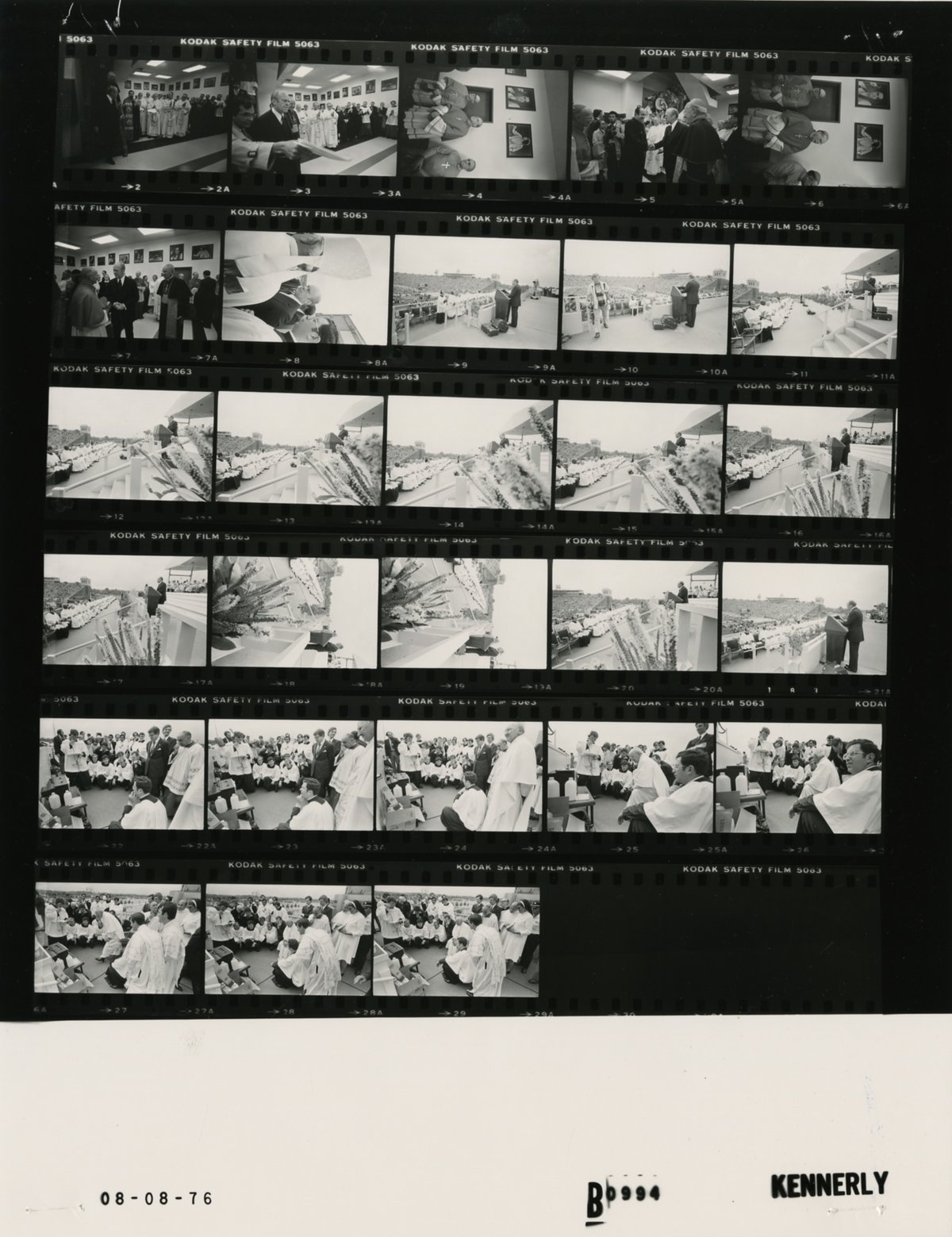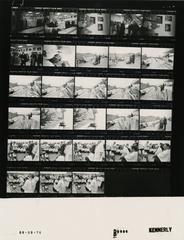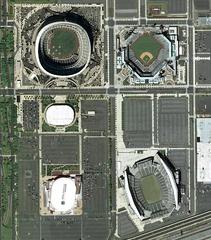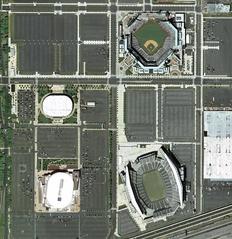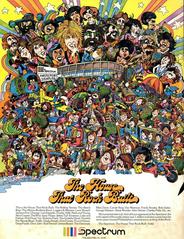The Spectrum Philadelphia Visiting Hours, Tickets, and Historical Sites Guide
Date: 14/06/2025
Introduction: The Spectrum’s Lasting Impact on Philadelphia
The Spectrum Philadelphia, once celebrated as “America’s Showplace,” played a pivotal role in the city’s sports, music, and cultural identity for over four decades. Since its opening in 1967, the arena became synonymous with the triumphs and traditions of the Philadelphia Flyers and 76ers, as well as the site of legendary concerts and civic gatherings. Although the Spectrum was closed in 2009 and demolished by 2011, its legacy remains deeply embedded in the South Philadelphia Sports Complex, now home to modern attractions like Xfinity Live!, the Wells Fargo Center, Lincoln Financial Field, and Citizens Bank Park. This comprehensive guide explores the Spectrum’s origins, historical significance, visiting information, and ways to engage with the ongoing spirit of this Philadelphia icon (The Clio, The Gold Nuggett, PATimes Media).
Table of Contents
- The Spectrum: Origins and Construction
- Iconic Sports and Cultural Moments
- Decline, Closure, and Demolition
- The Spectrum’s Enduring Legacy
- Visiting the Site Today: Hours, Tickets, and Attractions
- Practical Travel Tips
- Frequently Asked Questions (FAQ)
- Visual Resources and Internal Links
- Conclusion and Final Tips
- References
The Spectrum: Origins and Construction
The Spectrum was envisioned during a transformative period in Philadelphia’s urban development. Construction began in 1966, spearheaded by Eagles owner Jerry Wolman and Mayor James Tate, and the venue officially opened on September 30, 1967. Designed by Skidmore, Owings & Merrill and constructed by Thomas D. McCloskey, the Spectrum was built at a cost of $7 million. It featured advanced amenities for its era, including a multipurpose design and a state-of-the-art message board capable of displaying photos and animations (Metro Philadelphia, iphiladelphia.net, everything.explained.today).
Strategically located at the intersection of Broad Street and Pattison Avenue—on former Sesqui-Centennial Exposition land—the Spectrum became the heart of the South Philadelphia Sports Complex (everything.explained.today). With seating for over 18,000 for basketball and 17,000+ for hockey, it was lauded for its spaciousness and comfort.
Iconic Sports and Cultural Moments
Sports Legacy
The Spectrum was home to the Philadelphia Flyers (NHL), Philadelphia 76ers (NBA), Philadelphia Phantoms (AHL), and Philadelphia Wings (NLL). The Flyers’ “Broad Street Bullies” era saw back-to-back Stanley Cup victories in 1974 and 1975, while the 76ers clinched the NBA championship in 1983. The arena also hosted NCAA tournaments, boxing matches, and memorable moments like Christian Laettner’s buzzer-beater in the 1992 NCAA East Regional Final (The Clio, Metro Philadelphia).
Concerts and Cultural Events
The Spectrum’s stage welcomed music legends including The Beatles, Elvis Presley, Bruce Springsteen, Frank Sinatra, Billy Joel, and the Grateful Dead. At its peak, Billboard named it the nation’s leading concert venue, with over 50 concerts and 720,000 attendees in 1977 alone (The Gold Nuggett, Guestpectacular). The venue also hosted political rallies, charity events, and community fundraisers.
Architectural Features
Flexible and innovative, the Spectrum’s design allowed for rapid transitions between sports and entertainment events. Expansions and renovations over the years kept it competitive, though by the 1990s, newer venues offered more modern amenities (The Clio).
Decline, Closure, and Demolition
Decline and Final Years
By the late 1990s, the Spectrum’s older facilities—limited luxury suites, a single concourse, and some obstructed views—were outpaced by the newly opened Wells Fargo Center. Despite this, the Spectrum continued to host minor league sports and concerts until its closure.
Closure and Farewell Events
On July 14, 2008, Ed Snider, chairman of Comcast Spectacor, announced the Spectrum’s impending closure to make way for a new entertainment district. The last sporting and entertainment events, culminating with a Pearl Jam concert on October 31, 2009, marked an emotional farewell for fans (Wikipedia, All Sports History).
Demolition
Demolition began in November 2010 with a public “wrecking ball ceremony” attended by Philadelphia sports legends. The process concluded in May 2011, carefully controlled to avoid disturbing neighboring venues (NBC Philadelphia).
The Spectrum’s Enduring Legacy
Cultural and Civic Impact
The Spectrum was more than an arena—it was a uniting force for Philadelphia’s communities. It embodied the city’s blue-collar ethos, fostered civic pride, and propelled economic growth in South Philadelphia. The site’s transformation now reflects the city’s commitment to modernization while honoring its roots (The Gold Nuggett).
Memorials and Tributes
Although the building is gone, the legacy endures. Xfinity Live!—built on the Spectrum’s former site—features a mural and memorabilia, while the Wells Fargo Center and local bars display Spectrum artifacts. The site remains a pilgrimage point for fans and visitors (All Sports History).
Visiting the Site Today: Hours, Tickets, and Attractions
Xfinity Live! Philadelphia
- Location: Corner of 11th Street and Pattison Avenue, on the Spectrum’s former site.
- Hours: Generally open daily from late morning until late night; hours vary by venue and event.
- Tickets: No entry ticket required for Xfinity Live! itself; event-specific tickets may be needed (Xfinity Live!).
- Experience: Explore sports memorabilia, themed décor, restaurants, bars, and live events.
Wells Fargo Center
- Events: Home to Flyers and 76ers games, concerts, and shows.
- Tickets/Hours: Available through the official site; hours depend on scheduled events.
South Philadelphia Sports Complex
- Includes: Lincoln Financial Field (Eagles), Citizens Bank Park (Phillies), and FDR Park.
- Accessibility: Designed for easy pedestrian access, with ample parking and public transit via the Broad Street Line (NRG Station).
Nearby Attractions
- FDR Park: Urban green space for recreation.
- The Navy Yard: Historic district with dining and public art.
- Downtown Philadelphia: Short subway ride to historic sites like Independence Hall and the Liberty Bell (visitphilly.com).
Practical Travel Tips
- Public Transit: Use SEPTA’s Broad Street Line for convenient access.
- Parking: Available but can fill up quickly during major events; plan ahead.
- Best Times to Visit: For energy, visit on event days; for a quieter experience, come during non-event times.
- Dining: Xfinity Live! offers varied fare; try Philly’s iconic foods like cheesesteaks and soft pretzels (overyourplace.com).
- Accommodations: Numerous hotels nearby; book early for big events (visitphilly.com).
- Safety: The area is well-patrolled, but standard city precautions are advised (travellersworldwide.com).
Frequently Asked Questions (FAQ)
Can I visit the Spectrum Arena today?
No, the Spectrum Arena was demolished in 2011. However, you can visit Xfinity Live! on the former site, which pays tribute to the Spectrum’s history.
Are guided tours available?
No official guided tours, but Xfinity Live! features memorabilia and displays. Self-guided exploration is encouraged.
How do I get tickets for events at nearby venues?
Purchase tickets for games and concerts at the Wells Fargo Center, Lincoln Financial Field, or Citizens Bank Park via their official websites.
What are Xfinity Live!’s hours?
Hours vary by restaurant and event. Check the official website for up-to-date information.
Is the area accessible?
Yes, the complex offers ramps, elevators, and accessible seating in all major venues.
Visual Resources and Internal Links
- Images: Include photos of the Spectrum during its prime, demolition, and the Xfinity Live! complex. Use descriptive alt text such as “Spectrum Philadelphia exterior in 1970s” and “Xfinity Live! dining and entertainment complex.”
- Interactive Map: Embed a map showing the former Spectrum location and surrounding attractions.
Conclusion and Final Tips
Although the Spectrum Arena no longer stands, its influence remains deeply woven into Philadelphia’s cultural and sporting narrative. The South Philadelphia Sports Complex continues to celebrate this legacy through vibrant entertainment, commemorative elements, and ongoing events. Whether reminiscing about legendary Flyers and 76ers games, iconic concerts, or the sense of community fostered there, visitors can still connect with the enduring spirit of “America’s Showplace.”
For event updates, historical insights, and travel tips on Philadelphia’s sports and entertainment scene, download the Audiala app and follow us on social media. Let the Spectrum’s legacy inspire your next visit to Philadelphia.
References and Further Reading
- The Clio - The Spectrum Philadelphia: History, Legacy, and Visiting Guide to a Historic Sports Venue
- The Gold Nuggett - The Philadelphia Spectrum: Cultural Legacy, Visitor Information, and Its Enduring Impact
- Wikipedia - Philadelphia Spectrum Arena: History, Closure, Visiting Hours, Tickets, and Legacy
- All Sports History - What Happened to the Spectrum Arena?
- PATimes Media - Philly Stories: Echoes of Brilliance Remembering the Spectrum in Philadelphia
- iphiladelphia.net - Spectrum Arena Philadelphia: Visiting Hours, Tickets & Nearby Attractions
- Everything Explained Today - The Spectrum
- Xfinity Live! Official Website
- 6abc.com - Philadelphia 76ers Owners Comcast Spectacor Announce Plan for New Arena South Philly
- visitphilly.com
- travellersworldwide.com - Is Philadelphia Safe?
- overyourplace.com - Philadelphia Culture, Traditions, History, Customs, Festivals
